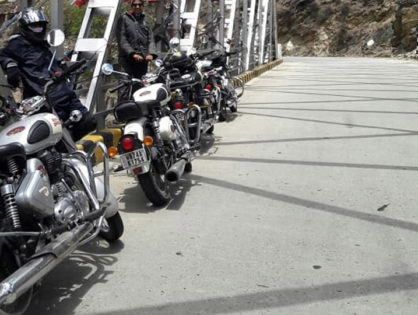Heat and humidity affects a rider’s efficiency to a large extent. In such cases it is necessary to train yourself with the weather conditions and get your body used to the varying temperature differences.
Here are a few cool training and racing tips from expert Coach Robb Beams.
Coach Rob Beams, who has been working with riders and racers since 1987, is the founder of the Complete Racing Solutions Performance Program, and also runs an academy to train the racers based out at Orlando Florida.
“Many riders don’t consider temperature differences while planning a ride,” explains Coach Rob, “This later creates a problem for them. Hence, it is important and advisable to study the route, know the place and its weather conditions. Then accordingly one should start training oneself depending on variations that they would face during the actual ride.”
Training and racing in Heat and Humidity
Training and racing in heat and humidity is not an easy task but some quick and easy tips can make your ride really comfortable. Let’s glance through these tips:
- Wear gear that facilitates evaporation process (avoid cotton at all costs)
- Train at times that are relevant to your race (i.e. if you are going to be racing at 2:00 pm, then practice at this time “teaching” your body to acclimate to the heat & humidity)
- Do not train with a sweatshirt – this will not acclimate your body to heat & humidity, but rather speed up your potential for a heat stroke! Wearing a sweatshirt is hard on your body just like mud on your radiators.
- Avoid over-hydrating on plain water; drink a sports drink that has a 4-6% concentration rate for optimal absorption & maintaining proper hydration levels. If the concentration rate is too high or too low, your body will not absorb your fluids and you may become nauseous and/or experience muscle cramping
- Research has validated, that cold fluids absorb faster than warm fluids. Use insulated bottles to help keep your fluids cold in hot conditions
- During hard training intervals in the heat, back off of the intensity for 20-30 seconds in the middle of the interval; it is like shaking your hands over a jump.
BE AWARE OF HEAT STROKE SYMPTOMS
Stage 1: Dry skin (indication that you have stopped sweating)
Note: stop the workout; you have hit a point where your fluid levels are dangerously low; performance is dropping.
Stage 2: Cold chills (visible goose bumps)
Note: your body is attempting to capture your attention; you have crossed the danger line; performance is irrelevant.
Stage 3: Become lightheaded, get a headache or feel queasy
Note: you are so dehydrated that your core body temperature has reached a critically dangerous point; bodily functions are being negatively affected.
Stage 4: The top of your head feels like someone has put a hot skillet on your head; your head feels “hot”
Note: you are literally “cooking” yourself from the inside out. Long term problems could result if you continue.



